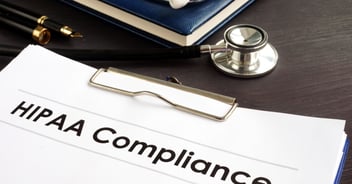Becoming Cybersecurity Compliant
Organizations are constantly at risk to falling victim to a cyber attack. A successful data breach can expose sensitive data and put critical infrastructure at risk. In order to help curb the risks of a cyber attack, many governments have crafted legislation to require a certain level of security.
These compliance frameworks are becoming more common and stringent as the government seeks to improve the national security posture. Becoming compliant can be an arduous process that costs both time and money. However, there are several steps your organizations can take to make the process easier and streamline implementation.
Do You Require Cybersecurity Compliance?
The first step every business should ask themselves is whether they even require compliance. If so, what regulations must you comply with? This widely varies depending on the industry, but for some organizations, multiple regulations may apply.
There are several compliance frameworks that may apply to your business:
- CMMC - If you work within the DoD, your organization will have to comply with CMMC.
- HIPAA - Any healthcare provider, insurer, or clearinghouse that handles medical information for individuals must comply with HIPAA. This protects private information pertaining to a patients health and other sensitive information.
- PCI DSS - If your organization stores, transmits, or uses credit card information in any way, then you will have to comply with PCI DSS.
Knowing what your organization must comply with will determine the steps you must take to ensure your business is adhering to the required regulations.
Perform a Security Assessment
No cybersecurity plan can hope to be implemented without a security assessment. Knowing where your gaps are and where your vulnerabilities lie is the first step in becoming compliant. Compliance can be time consuming and expensive, so knowing where you currently stand can help you make decisions about what controls you require and what you should prioritize. A quality gap assessment will also help you improve your overall security posture and provide practical security guidance.
Choose Your Security Framework
A security framework will help you map your security plan to the compliance requirements your organizations must adhere to. These frameworks are the foundation of compliance and cybersecurity plans in general. For example, CMMC is based on the NIST 800-171 framework. In order to comply with CMMC you must implement the controls outlined in NIST 800-171. These frameworks are necessary and will help you scale to comply with future regulations.
Involve Every Department
Cybersecurity is a team sport, and if everyone isn't on board then no one is. When talking about compliance make sure that every department at every level knows what they must do to help ensure security and compliance. Your security controls should apply to every employee no matter the position. This means that even the C-suite will have to be restricted in some capacity if required for compliance.
CorpInfoTech can help your organization become audit ready with managed security services that address your unique compliance needs. Contact us today to learn more about how we can help you through the compliance process!





